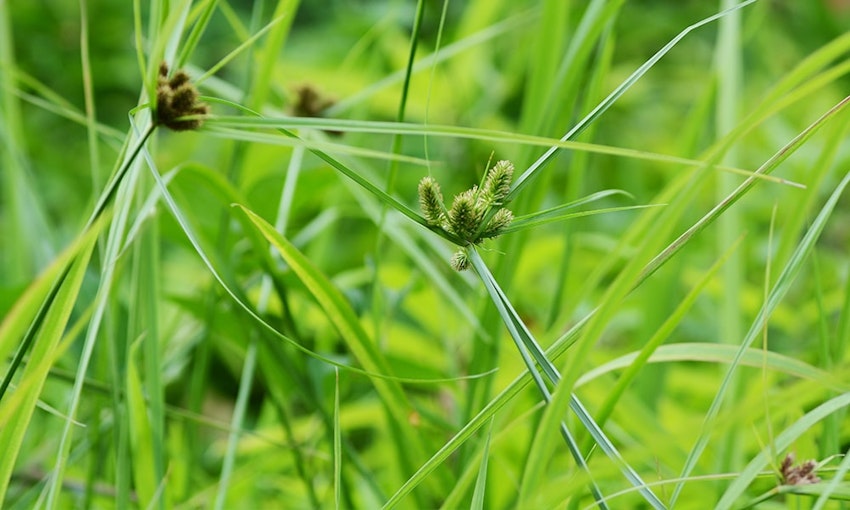Tiger Nut Day

Last 29 May was Tiger Nut Day and quite frankly, we think these little treats deserve more recognition - so we’re celebrating them again this year! Healthy, versatile and abundant - allergy sufferers especially will want to take note of the humble tiger nut...
What is a tiger nut?
Well for starters, it’s not actually a nut. It’s the edible tuber of the Cyperus esculentus, a sedge grass that is both grown as a crop and found wild, as a weed.
Okay, so what’s a tuber? It’s a much thickened underground part of a stem or rhizome.
This means that tiger nuts are grown underground, and in their raw appearance are wrinkled, marble-sized little balls. And no they have nothing whatsoever to do with tigers unless you count their striped coating - which is where they take their name from.
Tiger nuts are also known as Yellow Nutsedge, Earth Almond and Chufa.
What does it taste like?
You can eat tiger nuts raw, roasted, dried, baked or consume it in milk or oil form, and it will always have a tender, sweet and nutty taste - most commonly described as a cross between coconut and almond.
Where do they come from?
Many would say that the true home of the tiger nut is Egypt, where they grow beside the river Nile and have been made into drinks since 4000 BC. Natives also liked to roast them and serve them with honey, and in fact the ancient Egyptians loved tiger nuts so much that they had them engraved on their tombs. And we British thought we liked tea…
Tiger nuts also enjoy an illustrious history with Spain, where they were introduced by the Arabs and are known as ‘chufa’. Chufa is the primary ingredient in the traditional Spanish drink horchata.
Tiger nuts are grown in most of the Eastern hemisphere (including Africa), as well as the Middle East and India, and the USA (particularly California), where they were enjoyed by Native Americans.
Have they always been popular?
With the rise in allergies and non-dairy diets, tiger nuts have enjoyed a boom in popularity over the last few years, but it turns out the War generation was way ahead of us. With milk and sugar scarce, tiger nuts excelled as a sweet treat and base for a creamy drink, and their popularity continued into the fifties and post-war rationing era. But as the 20th century progressed and new products flooded the market they began disappearing from sweet shop shelves.

How do you eat them? On their own or in food and drink?
Tiger nuts are very versatile. If you wanted to you could literally eat them fresh out of the ground, but more commonly they’re dried or used to make tiger nut flour or milk – great for gluten or dairy-free baking.
You can also find tiger nuts in types of muesli and in puddings, but its most famous use is as the main ingredient in the Spanish (and sometimes Mexican) drink horchata. The Spanish pour theirs over ice while in Mexico you’ll usually find it served hot with cinnamon.
Are tiger nuts one of the 14 major allergens?
No! They have nothing to do with the 14 major allergens. Tiger nuts are not real nuts and therefore are safe for anyone with a nut allergy.
To put it in perspective, they have more in common with an artichoke than a nut.
However, people with digestive issues should still be careful not to consume too many tiger nuts in one go, as they might experience some bloating or cramping.
Are they good for you?
Whilst we’re always dubious by “superfood” claims, there can be no denying that tiger nuts are very good for you.
For starters, they’re a prebiotic, which is great news for your gut – they’ll stimulate the growth of good bacteria in your digestive system. They’re also bursting with magnesium, phosphorus and potassium as well as Vitamin C and Vitamin E.
Recently you might have heard about their weight loss benefits, which some say is due to their high content of resistant starch fiber – but essentially what you need to know is that they keep you fuller for longer than other foods with the same number of calories and they’ll prevent blood sugar spikes. All very, very good.
What are other uses for tiger nuts?
In the UK we like to use tiger nuts as fishing bait. The nuts have to be boiled and prepared in a special way so that the fish aren’t harmed by them.
And from fish to fuel… several preliminary studies have already taken place investigating the fuel quality of biodiesel produced from tigernuts.

Can you grow them yourself?
Indeed you can. The Cyperus esculentus will stand temperatures up to -5C, though experts recommend starting them off in a cool greenhouse. You can purchase them as plug plants and they’ll need plenty of water and space, as they grow very fast. As the weather gets warmer you can move the pots outside. The perfect time to harvest is early Autumn, when you simply harvest them from the roots of the plant.


